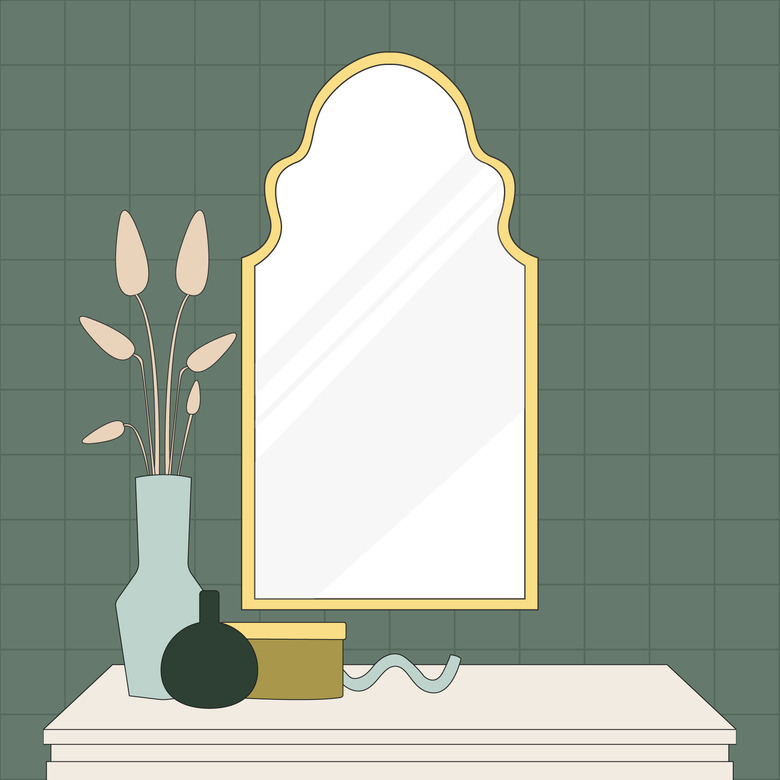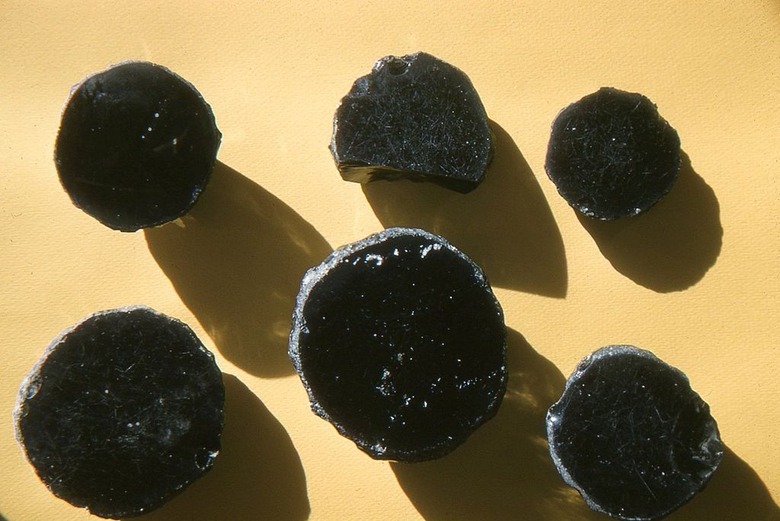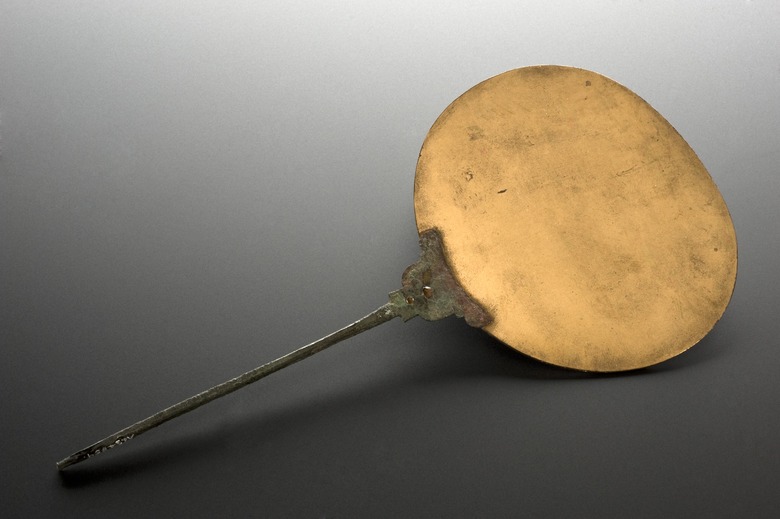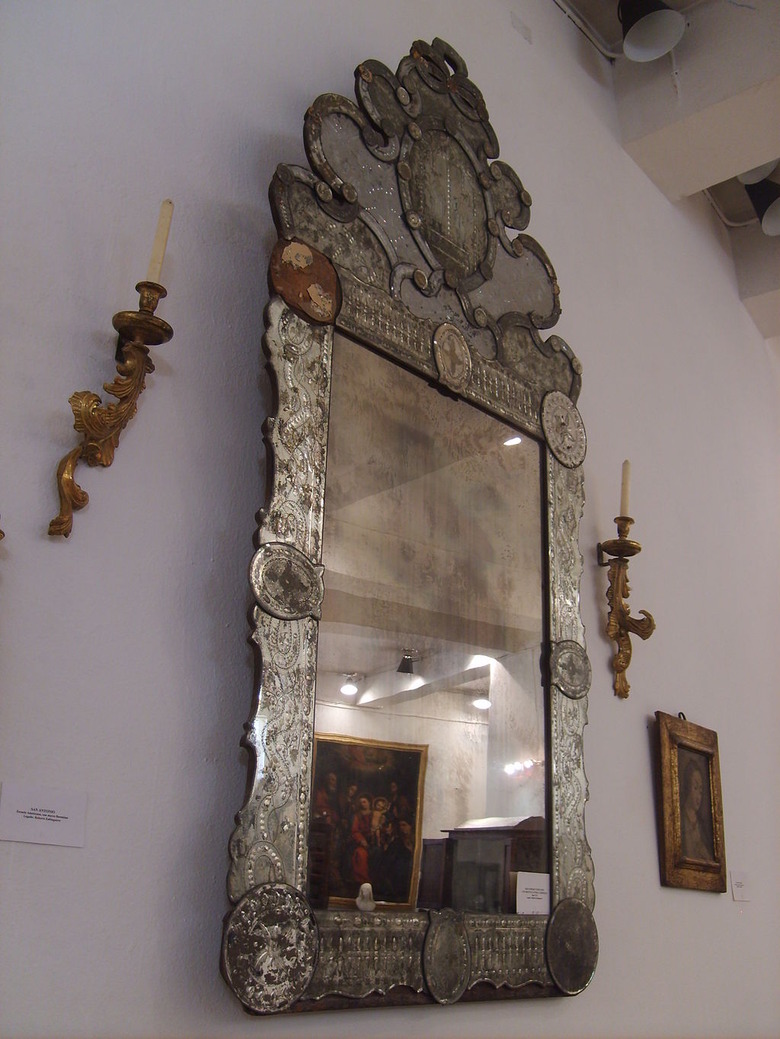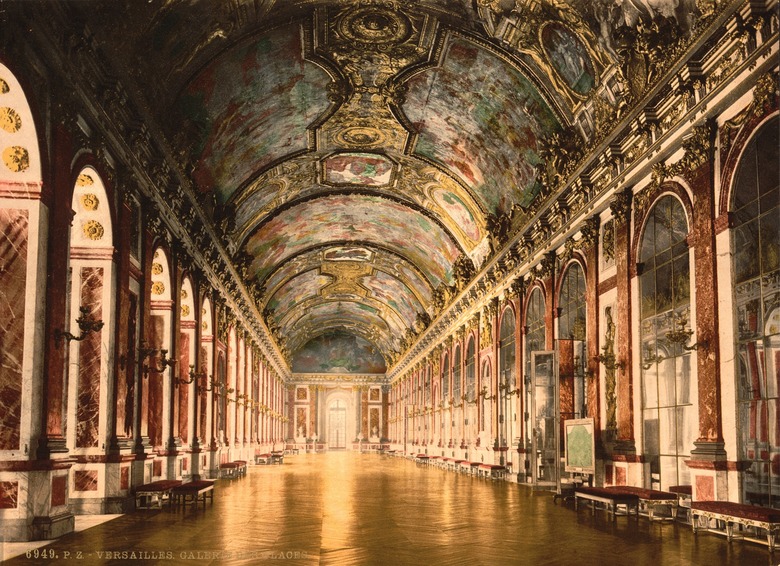The Forgotten History Of The Mirror Is Filled With Drama And Violence
Though mirrors have become commonplace in modern times — you may not even acknowledge the ones you see every single day — they were once a prized and supernatural commodity.
In her 1994 book The Mirror: A History, Sabine Melchior-Bonnet writes that humans have been interested in seeing their own image since prehistoric times. In the beginning, this was likely done using a pool of water and dark, shiny stones like obsidian. In fact, according to Mark Pendergrast's Mirror, Mirror: A History of the Human Love Affair With Reflection, though it's impossible to pinpoint exactly when humans developed an artificial mirror, the earliest one of its kind was found by archeologists at Çatalhöyük (near Konya, Turkey). It dates back to 6200 B.C.E. and was made of polished obsidian.
What were ancient mirrors used for?
What were ancient mirrors used for?
"The ancients — Egyptians, Indians, Chinese, Mayans, Incas, and Aztecs — buried their dead with magical metal or stone reflectors," writes Pendergrast, referring to how mirrors were once believed to hold magical powers. "[T]o hold the soul, ward off evil spirits, or allow the body, before taking its final trip to the afterlife, to check its hair." People would also use mirrors for divination purposes, and yes, they even believed them to cause bad luck if broken.
Ancient Mediterranean civilizations — Mycenae, Greece, Etruria, Rome, and Egypt — were particularly obsessed with beauty and also designed their mirrors out of metal (copper, tin, and bronze). "Appropriately, the invention of the mirror was attributed to Hephaistos, the Greek god of fire and metal," reveals Melchior-Bonnet. Rarely, mirrors were also made out of silver or gold, and these were likely for the upper class. But no matter the material, ancient metal mirrors were surprisingly tiny: "roughly five to eight inches in diameter," according to Melchior-Bonnet.
When were glass mirrors invented?
When were glass mirrors invented?
As for when glass mirrors were introduced, it's a matter of debate. "Only two written references have been found; the first by a commentator on Aristotle, Alexander of Aphrodisias, in the third century A.D.," writes Melchior-Bonnet, "and the second is found in the work of [Roman author and philosopher] Pliny the Elder, who attributes the invention of glass mirrors to the residents of Sidon (now Saida in Lebanon)." Glass mirrors, in particular, have been uncovered in archeological digs that date back to the third century A.D.
Early glass mirrors were slightly colored, and featured a glass capsule made with a blowing rod and a layer of melted lead coated with gold or tin. Improvements on the process of glass mirror-making, along with the technique of silvering mirrors, were unfortunately prolonged. Yet, the Venetians on the island of Murano gained quite the dangerous reputation for producing quality, highly expensive glass mirrors during the 13th century and beyond.
"The glassmakers at Murano jealously guarded the tricks of their trade, as did the Venetian government; spilling trade secrets was punishable by death, and if a glassmaker dared to leave Murano, their family was sometimes held hostage in attempts to hasten their return," writes Katy Kelleher in her "The Ugly History of Beautiful Things: Mirrors" article for Longreads. Later on, in 1547, two Venetian glassmakers were actually assassinated when they tried to move to Germany.
Why making glass mirrors was dangerous:
Why making glass mirrors was dangerous:
The Venetian glass-making trade was somehow made even more dangerous by the fact that the workers were using toxic materials like mercury. "Workers who inhaled mercury fumes might develop behavioral and personality changes," writes Kelleher, citing that they may suffer from failing kidneys, shaking hands, a loss of memory, depression, and more. Who knew that glass-making could be such a violent, unnerving career?
Like all golden ages, the Venetians' acclaim did not last. In the end, they were unable to enlarge the dimensions of their tray-sized mirrors, and in 1685, their industry collapsed. The latter occurred due to competition from France and Bohemia (today known as Czech Republic). Despite such changes, Melchior-Bonnet writes, "[F]or two more centuries, polished metal mirrors remained the most widespread."
In the meantime, in France, Jean-Baptiste Colbert, a French statesman who served under King Louis XIV, founded the Royal Mirror Glass Company in 1665, according to the Musée d'Orsay's writings. By 1672, Colbert was able to ban the importation of Venetian mirrors and soon took advantage of a new glass casting technique created at the Saint-Gobain factory in 1693. Now, large mirrors could be produced.
When was the modern-day mirror invented?
When was the modern-day mirror invented?
Ultimately, the modern-day mirror we know and love began to take shape in 1835. Writing for McGill University, Joe Schwarcz, PhD, states that the German chemist Justus von Liebig discovered how to coat glass with a thin layer of metallic silver. This paved the way for mirrors to become mass-manufactured, widely available, and affordable (thankfully), just as we know them today.
So perhaps the next time someone asks, "Mirror, mirror on the wall, who's the fairest of them all?" the answer should be, "Justus von Liebig."
